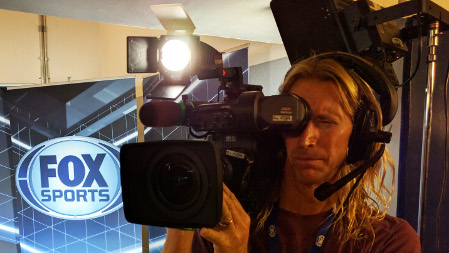Lighting for ENG
When shooting in the style of electronic newsgathering, especially as a solo journalist on location, there is so much to take into consideration. On-location shooting ENG typically does not allow for a lot of setup time nor much time with a subject, and the overall workflow for prepping, shooting, cutting and delivering a piece like this is very fast. These shoots consist of short stories journalists go out and capture on location as events are happening. They can also be short stories that are pieced together through interviews, b-roll, and live events. As with any role in production, when you are capturing a story on your own, you should constantly be going down a mental checklist of tasks.

First and foremost is understanding the subject and the story. After coming to a solid understanding of the story you are telling, the next step is always planning the most effective way of telling it.
UNIQUE CHALLENGES
Every story has different locations and each presents its own unique set of challenges. When it comes to lighting, not having a lot of time to set up and tweak is simply the nature of ENG.
The key is to prepare as much as possible ahead of time for shooting in every location, if you can. Understand the obstacles the location presents. Take advantage of the available light in the space, the time of day you can shoot there, and the directions you can point the camera once you are there to roll. Have an idea what the shots are that need to be obtained and if you can scout before the shoot day, take plenty of references photos. Utilize windows, practicals, and the tools you are able to bring with you.
[Lighting the Scene From Different Directions]
One great way to supplement light if you don’t have a bounce board is to shine the light into a wall or ceiling. On the day of the shoot, place your subject where there is light, pull them away from walls, and then plant the lighting tools you have at your disposal.
For example, when I was starting out in ENG, I had a story in someone’s home where we were to shoot interviews. I had not seen the location before. There were large windows in the living room, so I placed the subject where one of the windows could essentially be her key light. Then, all I had to do was use one of my lights to supplement and shape that window light.
RAISING THE BAR
Our tools are advancing rapidly to give us more flexibility while shooting, which make quality images more and more obtainable in ENG. Cameras keep raising the bar in terms of dynamic range, so cutting light in specific areas or trying to supplement shadows becomes less of an issue. They can see more, and so dealing with a range of exposure in the frame has become a more manageable job. However, we still want to have some control and get it to where we want it. It is beneficial to always bring a few lighting tools on the day, especially if you haven’t yet seen the location and you’re going to capture something live as it happens. If you can bring a lighting kit, whether it be a set of LEDs, Kinos, etc., great. This means you will need a power solution and some stingers, but you’ll have bigger sources with you and be able to supplement light in darker spaces.
If a “legitimate” kit is not available, there is now a plethora of mobile lighting options. Aputure, Westcott and so many more have beautiful LED lights in a variety of models and sizes that come in very handy in something like ENG. There are many bi-color and RGB options as well, so gels may not be necessary and you can be prepared for different color temperatures on location. A lot of shooters go about explaining ENG lighting as 3-point, but that doesn’t have to be the case. Two lights is a great strategy—you can supplement or create a key, and then fill or separate as needed.
[Exterior Scenes Can Present Challenges]
There may be a shoot where you cannot bring lights for whatever reason. You are just a journalist with a camera and have to rely on natural light. First consideration is shooting outside. Find somewhere with soft light, in the shade, or if there is no shade, point the camera toward the sun so the subject is backlit. With the cameras we have today, this is a safe way to control light and maintain exposure.
ENG shooting is the perfect combination of needing to be proactive and reactive. Preparing as much as possible, but also bringing different tools to adjust accordingly, is so important. Another key is simply not to overthink it. Our technology has advanced so much and locations can provide a lot of great light and color. ENG will always be a great way to learn how to tell a story quickly and effectively and keep lighting simple while still capturing beautiful images.
Get the TV Tech Newsletter
The professional video industry's #1 source for news, trends and product and tech information. Sign up below.
